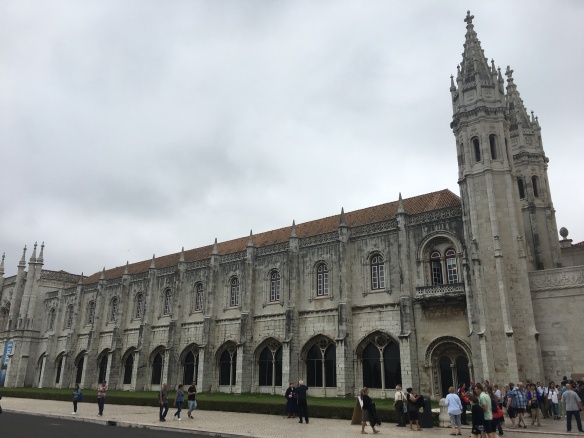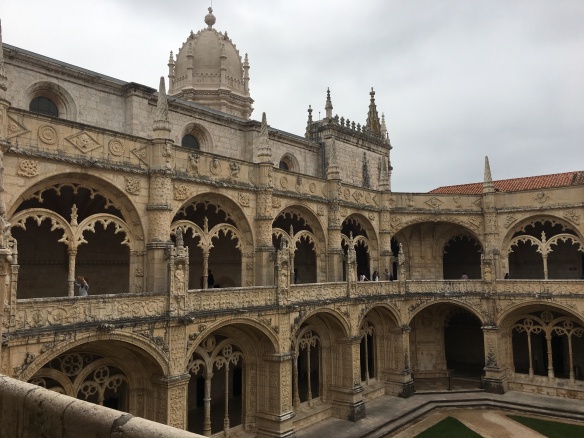As I watched, thrones were set in place, and an Ancient One took his throne .. (Daniel 7:9)
There appears to be something different about the throne of the Ancient One. Among all the thrones, when the Ancient One sits down we are to take notice. What is it about God’s throne that stands out?
At this time of the year, we still ought to be saying: “Winter is coming.” Although it is obvious now that we can, with all “Game of Thrones” fans, be asserting those ominous words that indeed, “Winter has arrived”!
Fans of the epic TV series “Game of Thrones” need still to wait until the final season airs next year. In the symbolic centre of this miasma of twisting plot lines and characters constantly fighting for supremacy sits the imposing throne at the front of the grand hall of the capital city in George RR Martin’s fantasy world of ‘Westeros’.
Who will finally succeed in claiming the throne? Who IS the rightful heir? And how will each of the so-called ‘pretenders’ manage to usurp ultimate power in the Seven Kingdoms? These are the questions swirling around this throne, highlighted by spiked swords and jagged edges—a dark, cold symbol reflecting the heart, it seems, of what it takes to succeed in this place.
… and an Ancient One took his throne …
When Jesus stands before Pilate hours before Jesus dies a criminal of the state on a bloodied cross, he tells Pilate that his kingdom is not of this world.[1]The cross stands as a counterpoint to the world’s thrones. The cross stands as a symbol, not of cold-hearted power-plays and world domination where the end justifies any, bloodied means. No, the cross is a sign of the God who failed according to the world’s rules, who found defeat at the hands of the worldly mighty.
The throne that Jesus sits on is indeed very different from all the others. When Jesus said ‘my kingdom is not of this world’ he meant its values are at odds with how power is exercised among humans, in all its brutish ways. We may be alarmed, and despair; yet, we accept that the ‘Game of Thrones’ world is quite similar to our reality on earth, more so than the kingdom of God.
I find at least two ways we fail to see and realize God’s ways on earth:
First, I suspect, for Christians, the temptation is to go the other way: to deny God’s kingdom on earth. The problem is that, without even consciously, we may delegate God’s values to some fantasy world. To practice genuine humility, forgiveness, grace, mercy and unconditional love not just to family and friends but to people we don’t know—well, we say, that’s reserved for ‘heaven’ someday; it has no place in the ‘real world’, we way.
But God’s throne is not in a different world than ours. God’s throne is not ‘up there’ or ‘over there’ or in some fantasy world far removed from our own.
The truth, and our hope, is that God’s way can be realized on earth. Not only has Jesus enabled people of all time and place to face the truth about ourselves, our relationships, our faith, and the world in which we live, Jesus is saying that his kingdom is also present — in part — upon the earth, in all our relationships.[2] Wherever grace is given and received, wherever forgiveness is practiced, wherever mercy and love are shown. There, is God.
I’m finishing up this week teaching a course on Martin Luther, prayer and the legacy of the Reformation (at the Ottawa School of Theology and Spirituality). In teaching this course, the students and I have returned time and time again to the notion of movement. Semper Reformanda–the Latin phrase popularized by Karl Barth in the last century: Always reforming. The legacy of the Reformation is that we are a church that is continually changing, and moving, and becoming. And, in what ways?
Here, I want to bring in the Rev. Riitta Hepomaki, assistant to Bishop Pryse (Eastern Synod–Evangelical Lutheran Church in Canada). She said at the workshop the council attended last weekend that what we lack, today, as a church of the Reformation is this sense of movement. Our western church, and especially our generation, has adopted a “we have arrived” mindset.
This is the second way in which we fail to realize God’s ways, God’s reign on earth.
If we have arrived, we don’t need to move. If we don’t move, we are stuck. The feeling of being stuck often leads to hopelessness. And, we are not talking here about physical movement from one street address to another, per se. We can make little moves: from the church hall to the streets, from our own kitchen or garden to a community kitchen or garden—wherever God is sending you.
Giving up the ‘we have arrived’ mindset means also that we are willing to move from my little world to other people’s worlds. It is challenging. But we can do it because we have faith, even faith the size of a miniscule mustard seed. And we have each other. We have fellowship. We have a new way of life. And because we are confident that our God will guide and provide.
So, let’s try to change our mindset from ‘having arrived’ to ‘being sent’, and ‘being in movement’. After all, if we don’t move, we cannot follow. Aren’t we called “followers of Jesus?”[3]And, today, we proclaim, that Jesus is the Lord of our lives. And that we are followers not of the ways of the world, but of the Reign of Christ.
In another vision of God, this time from a major prophet[4]in the Hebrew scriptures, God sits on his throne, yet the primary image is of the hem of God’s robe filling the temple. God’s presence permeates and fills all.
The world will indeed separate and set a boundary between the most powerful ‘at the front on the throne’, and the rest of us on the floor down below. Not so with God. In Christ, that boundary has been severed. Moments after Jesus died on that symbol of death and defeat—the cross—the curtain in the temple was torn.[5]The dividing line between where God is and where the rest of us are was opened.
No longer are we divided, violent, fighting, them-and-us. No longer need we compare, compete and kill. These are the actions and behavior of those who bow to the world’s thrones.
Rather, we are all enfolded in the robes of God’s grace forever. There are no boundaries, no limits, to the love of God in Christ Jesus our Lord. And, as the writer to the Hebrews expresses, we can therefore approach the “throne of grace” will confidence.[6]No longer afraid that God will rebuke, punish and condemn us. No longer condemned by our faults, sins and weaknesses.
We can approach this throne with boldness, assured that God will embrace us in mercy, forgiveness, and love.
[1]John 18:33-37, Gospel for the Reign of Christ Sunday, Year B, Revised Common Lectionary (RCL).
[2]Robert A. Bryant in David L. Bartlett & Barbara Brown Taylor, eds., Feasting on the Word, Year C Vol.4 (Kentucky: WJK Press, 2009), p.337.
[3]Riitta Hepomaki, The Eastern Synod Lutheran Volume 44, Sept 25, 2015 (Kitchener: Eastern Synod of the Evangelical Lutheran Church in Canada), p.1
[4]Isaiah 6:1-8
[5]Matthew 27:51; Mark 15:38; Luke 23:45
[6]Hebrews 4:16









